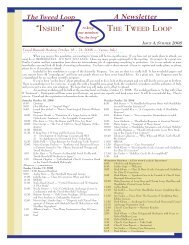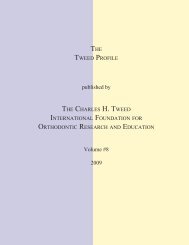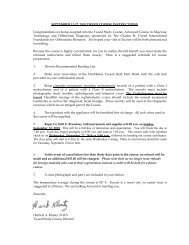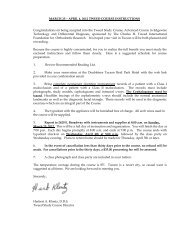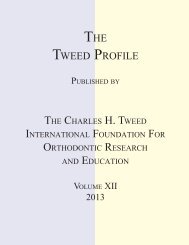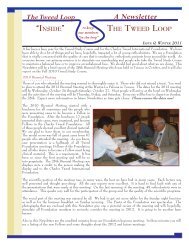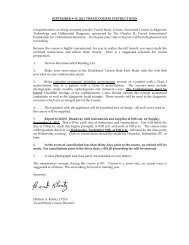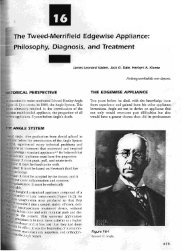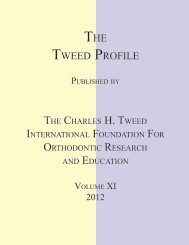© 2006 - The Charles H. Tweed International Foundation
© 2006 - The Charles H. Tweed International Foundation
© 2006 - The Charles H. Tweed International Foundation
Create successful ePaper yourself
Turn your PDF publications into a flip-book with our unique Google optimized e-Paper software.
<strong>The</strong> more protrusive the lip profile, the less the Z-angle. <strong>The</strong> more retrusivethe lip profile, the more the Z-angle. In general, as the lip profile position becomesmore protrusive in its relationship to the chin, the Z-angle will decrease and the E-valuewill become more positive. As the lip profile position becomes more retrusive in itsrelationship to the chin, the Z-angle will increase and the E-value will become morenegative. In this study, pretreatment and posttreatment measurements were comparedwithin the nonextraction and extraction groups and between each of the two groups.THE SAMPLEIn the nonextraction group, the posttreatment Z-angle ranged from 68° to 90°.Fig. 2. E-value measurement.<strong>The</strong> posttreatment E-value ranged from +1.5 mm to -10 mm. Only one patient in thenonextraction group had a positive posttreatment E-value (+1.5 mm). <strong>The</strong> averageposttreatment Z-angle for the nonextraction group was 79.01°. <strong>The</strong> average posttreatment E-value for the nonextractiongroup was -4.05 mm.Several different extraction protocols were used in the extraction group. <strong>The</strong> most common ones were (1)maxillary and mandibular second premolars (14 patients), (2) maxillary first premolars (7 patients), (3) maxillaryfirst premolars and mandibular second premolars (27 patients), and (4) maxillary and mandibular first premolars (36patients). <strong>The</strong> remaining patients (24) in this group required various other extraction combinations.Characteristics of the maxillary and mandibular second premolar extraction subgroup were (1) mild tomoderate arch length discrepancy, (2) good soft tissue facial pattern or mild facial imbalance, and (3) good skeletalpattern. An example of this extraction protocol is shown (Fig. 3A, Fig. 3B).Characteristics of the maxillary first premolar extraction subgroup were (1) Class II dental relationship, (2)maxillary protrusion, maxillary anterior crowding, or both, and (3) good mandibular incisor position with little or nocrowding. An example of this extraction protocol is shown (Fig. 4A, 4B).Characteristics of the maxillary first premolar and mandibular second premolar extraction subgroup were (1)Class II dental relationship and mild to moderate Class II skeletal pattern, (2) mild to moderate mandibular archlength discrepancy, (3) soft tissue facial imbalance, and (4) low to medium Frankfort mandibular plane angle. Anexample of this extraction protocol is shown (Fig. 5A, 5B).Characteristics of the maxillary and mandibular first premolar extraction subgroup were (1) severe archlength discrepancy, dental (bialveolar) protrusion, or both, (2) Class I or Class II dental relationship, and (3) mediumto high Frankfort mandibular plane angle. An example of this extraction protocol is shown (Fig. 6A, 6B).RESULTS<strong>The</strong> facial profiles of the extraction group and the nonextractiongroup were within the normal range of Z-angle and E-values at theconclusion of treatment. On average, the nonextraction group completedtreatment with a slightly more retrusive lip profile position than did theextraction group (Fig. 7A). <strong>The</strong> posttreatment Z-angle average for thenonextraction group was 79.01° (Fig. 7B) compared with 73.74° for theFig. 3. A, Facial photographs: extractionof four second premolars (pretreatment-left;posttreatment-right).Fig. 3. B, Tracings: extraction of four second premolars (pretreatment-left;posttreatment-right).21



